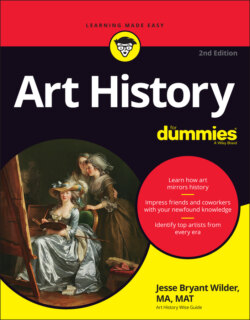Читать книгу Art History For Dummies - Jesse Bryant Wilder - Страница 110
Spending life preparing for death
ОглавлениеThe pharaoh spent much of his life preparing for death. A new pharaoh built his own tomb — which was considered his second or eternal home — as soon as possible. (Who knew when he’d have to move in?) He stocked the tomb with provisions that he would need in the hereafter, including clothes, toiletries, jewelry, beds, stools, fans, weapons, and even chariots. (King Tut was entombed with four golden chariots!) After his death, the immense task of managing a pharaoh’s tomb was given to an entire town.
During the Middle and New Kingdoms, rich and middle-class Egyptians also built elaborate tombs. After someone passed, a family member known as “the priest of the double” supervised the tomb and fed the dead relation from a sort of mummy menu, which included bread, fruit, meat, wine, and — yes — beer! (Picture a tipsy mummy chasing you at night.) For insurance, pictures of food were painted on the walls in case a descendant neglected his duties and stopped supplying meals. The pictures, combined with the right spells uttered by the deceased’s spirit, would magically zap the food onto the table.
The tomb housed not only the mummy, but also the deceased’s ka, or soul, which was represented by a statue kept in a sealed-off part of the mastaba. The ka statue was a backup in case the mummy disintegrated or was stolen. The statue had to look like the dead person in order for its magic to work. The words carved from life are inscribed on many ka statues.
Compare the realistic facial features of the life-sized ka statues of Prince Rahotep (son of King Sneferu, the founder of the fourth dynasty) and his wife, Nofret, in Figure 6-2 to the generic faces of King Menkaura and his queen (available to view at the Museum of Fine Arts, Boston, mfa.org). This realism wasn’t intended to impress anybody. When the pharaoh died, the statue was sealed up with him. No one ever saw it again.
logan09 / 123 RF
FIGURE 6-2: Ka statues, like those of Prince Rahotep and his wife, had to be realistic to perform their magic.
